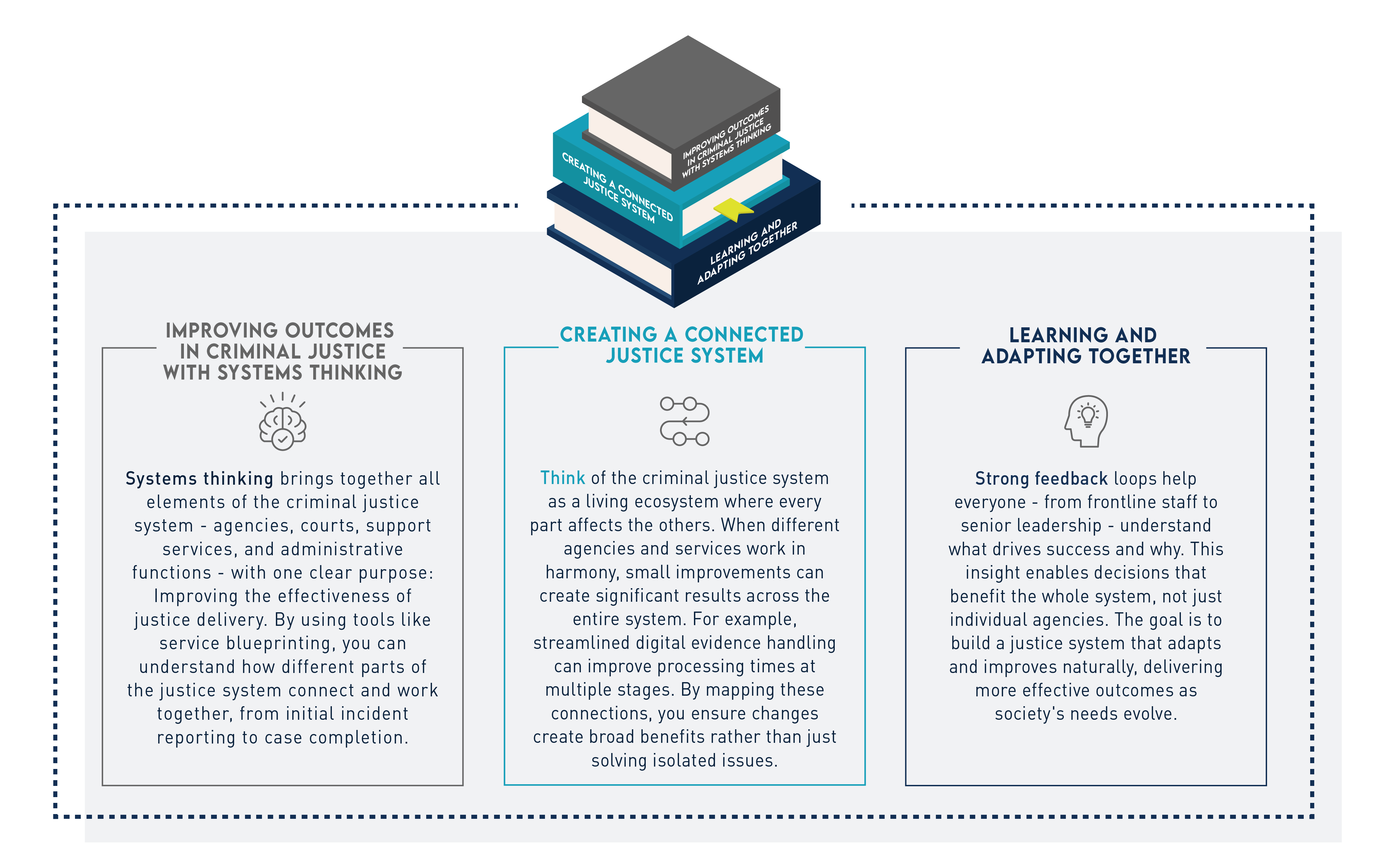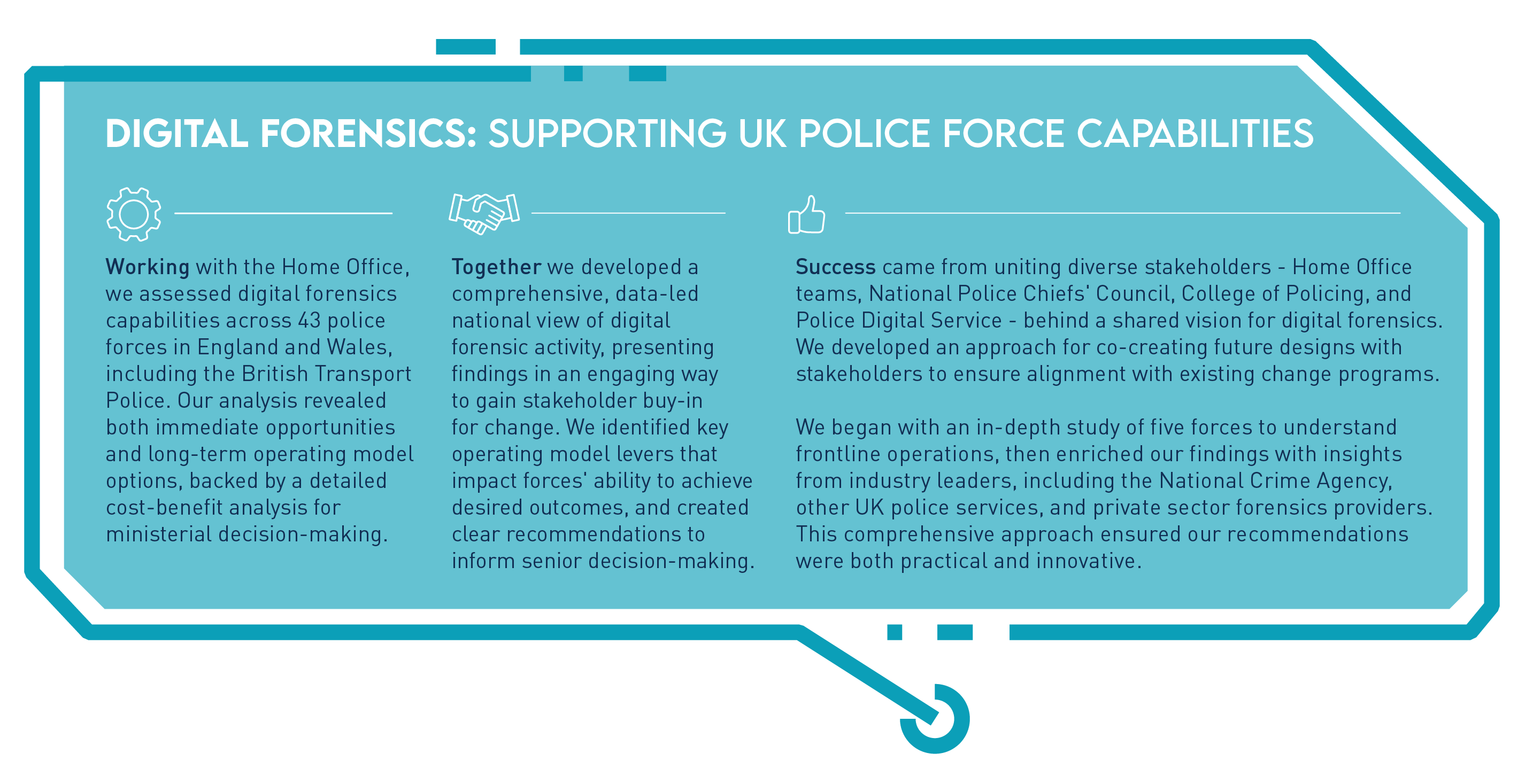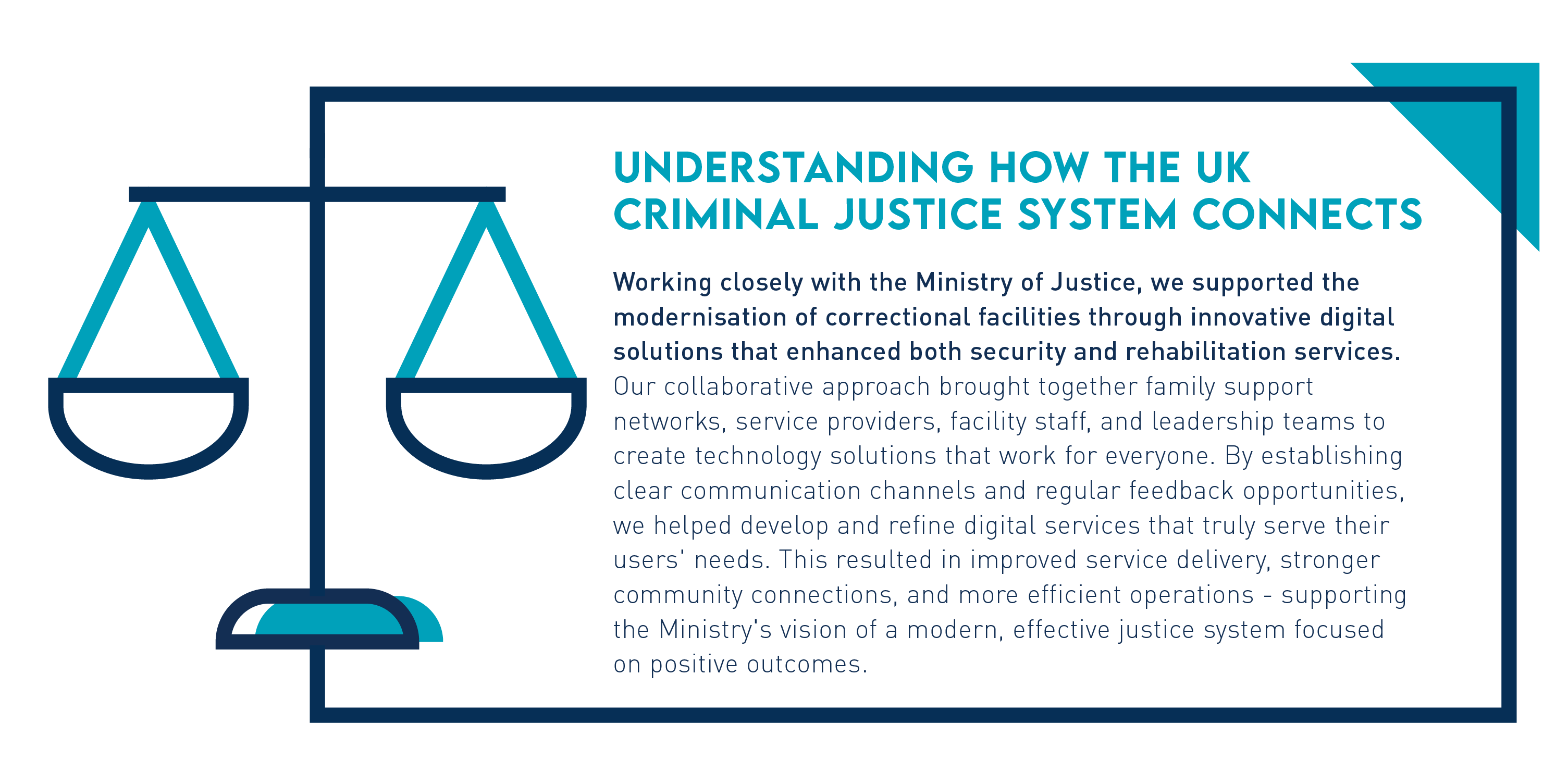The United Kingdom's criminal justice system is under pressure from multiple challenges, including prison overcrowding, court backlogs, digital evidence management, cybercrime, and declining public confidence. The government has taken measures to address these issues over the past few decades, such as implementing reforms and legislation like the Civil Contingencies Act 2004 and the Policing and Crime Act 2017. These initiatives pave the way for greater collaboration between police services and other public and private sector organisations, fostering smarter information sharing, boosting operational efficiency, and delivering higher quality services—all while reducing siloed approaches
The new UK government plans to continue these efforts, as it strives to reduce crime, tackle violence against women and girls, and rebuild public confidence in policing. It has committed to initiatives including adding 13,000 additional neighbourhood police officers and Police Community Support Officers (PCSOs) to local communities, while placing specialist domestic abuse advisors in emergency control rooms. However, the criminal justice system's interconnected and complex nature means that isolated initiatives, while valuable, cannot alone create lasting change.
Achieving meaningful transformation necessitates a comprehensive, end-to-end approach that embraces systems thinking. By examining the criminal justice system as a whole, policymakers can clearly see the dependencies and interactions between all components—from crime prevention to offender rehabilitation and everything in between—so they can optimise resources and reduce duplication. Systems thinking also helps leaders align people, processes, structures, governance, technology, and data across the enterprise, creating opportunities for greater collaboration. The result is more efficient and effective services that improve outcomes for all stakeholders.
Without a systems thinking approach to transformation, leaders are at risk of:
- Perpetuating a cycle of pain points where issues are merely transferred between parts of the system rather than resolved
- Missing critical connections and root causes that underlie systemic challenges
- Foregoing valuable lessons from experiences across the system that could inform more effective strategies

Read on to learn more.
From fragmentation to integration: Unlocking the power of connected systems
The UK criminal justice system stands at a pivotal moment. While the National Police Chiefs' Council champions collaborative partnerships and the system continues to advance toward deeper integration, challenges persist. For instance, 43 police forces across the UK operate different case management platforms, creating a complex web of communication with the Crown Prosecution Service (CPS). Picture CPS staff navigating multiple IT systems just to access police files. Systems thinking offers a powerful solution through the Police Efficiency and Collaboration Programme. By mapping the complete journey of data and cases—from police to CPS to the Ministry of Justice (MOJ)—it could help the government transform the current fragmented landscape into a seamless, integrated system. This isn't just about technology; it's about strengthening existing partnerships while enhancing service delivery across the criminal justice network.
While streamlining case management illustrates the potential of systems thinking, its applications extend far beyond. This approach can address numerous systemic challenges, including:
- Resistance to change. Organisations often resist system-wide tranformations, viewing them as burdens rather than opportunities for improvements. Even with strong leadership, change fails without organisational buy-in and proper implementation structures.
- Misaligned incentives. Police services are typically rewarded for optimising individual performance rather than contributing to system-wide goals and collective outcomes.
- Lack of a shared language. The £250 million annual investment in collaboration signals a serious commitment to transformation. To build on this foundation, the system must identify a unified way of measuring and discussing success. By establishing shared metrics and collective accountability, it can track progress from initial crime prevention through to final judicial outcomes. Think of it as creating a universal translator that allows different parts of the system to speak the same language—enabling genuine collaboration and stronger partnerships across the entire criminal justice landscape.
From vision to reality: Putting systems thinking to the test
How can organisations move beyond traditional silos to embrace a truly holistic approach? Here's how you can boldly turn the concept of systems thinking into a powerful reality:
Unite stakeholders with a shared vision.
Bring together leaders from across departments to forge a common North Star or a vision. Collaboratively define desired outcomes and establish clear, measurable metrics for success. When examining the criminal justice system, it's crucial to align everyone around its fundamental purpose, ensuring that outcomes and performance measures reflect this shared understanding.
Unravel the web of interconnectivity.
The criminal justice system is a complex tapestry, woven with countless threads that influence one another. Like a cascade of dominoes, a single change in one area sends ripples throughout the entire system. For instance, changes in police evidence gathering practices can directly impact prosecution success rates and court efficiency. By mapping out the end-to-end system, you'll identify the intricate ways in which different components intertwine and work together. This comprehensive understanding empowers you to:
- Predict the outcomes of new initiatives with greater precision
- Quantify the true value of collaboration between agencies
- Optimise resource allocation for maximum impact
- Anticipate and mitigate potential negative consequences
- Identify untapped opportunities while preserving institutional independence
Embrace agility and iteration.
Instead of embarking on large, high-risk reforms, systems thinking encourages you to start small, test, and learn. Focus on specific pain points or opportunity areas identified through system mapping, and assemble teams to rapidly prototype and pilot targeted solutions. This approach is all about testing the impact of changes across the entire system and learning before scaling up. It's an effective way to drive continuous improvement while minimising disruption. When assessing performance, avoid a fixed target approach, allowing organisations to account for variation and complexity.
Create a continuous improvement culture.
Encourage knowledge and insights sharing between disciplines and departments to build strong connections, feedback loops, and working relationships across different agencies. When teams understand how their work affects others, they can adapt quickly to new challenges and learn from both successes and failures. This comprehensive view shifts your focus from simple cost-cutting to creating meaningful improvements for everyone involved in the justice system—from police officers to prosecutors to the public they serve.
A Case Study
Integrate scenario and design thinking with systems thinking.
Combine systems thinking with design and scenario thinking for a more comprehensive approach, which we call "Transformation Thinking." While systems thinking reveals the interconnections and influences between different parts, design thinking places people's needs at the centre of solutions, and scenario thinking enables planning for various possible futures. The synergy of these three schools of thought will help you adapt to change and create solutions that genuinely work for the people who use them. Explore Transformation Thinking further and discover how to cultivate a "made-for-change" mindset here.
Adopt a long-term perspective for sustainable change.
Achieving lasting change in the criminal justice system requires looking beyond quick fixes and understanding how today's decisions shape tomorrow's outcomes. This necessitates collaboration across government agencies. When your departments align on goals and messages, you can more effectively innovate through technology, data sharing, and partnerships. By pooling resources and expertise instead of working in silos, you can tackle shared challenges more efficiently. Additionally, by recognizing the criminal justice system as an interconnected whole rather than isolated parts, opportunities arise to forge stronger links with other essential public services. Connecting with education to prevent crime, healthcare to address underlying issues, and employment services to reduce reoffending creates a foundation for deeper, more sustainable improvements that benefit society as a whole.
A Case Study
Accelerating your transformation journey
Are you ready to embrace the power of systems thinking to create a system that is truly integrated and customer-centric at its core? By striving for system symbiosis, you ensure that each part of your complex ecosystem supports and enhances the others, even in the face of rapid change. Imagine the possibilities of unprecedented collaboration across the criminal justice system, where every stakeholder benefits from seamless connections and efficient sharing of information, resources, and expertise. By partnering with systems thinking experts in the public sector, these possibilities are well within your reach. You'll build upon existing foundations, elevate service delivery to new heights, and create a more cohesive and integrated approach to criminal justice.

Connected Content





